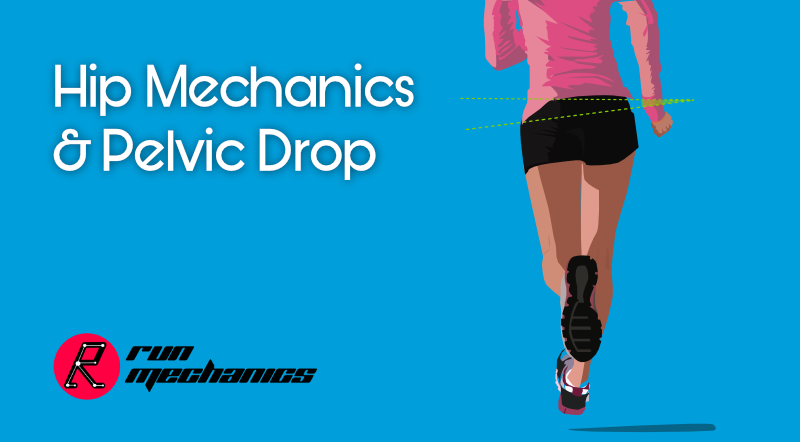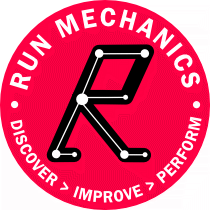Runners often focus too much on foot strike, foot pronation and other clearly visible aspects of running. At RunMechanics we do a thorough analysis, which can help runners in the longer term. In particular, we give special attention to what happens up above the leg musculature, from where most of the form issues stem. We observed hip muscles are complex and are the powerhouse of running. Over the last few months, we observed that most performance issues originate here.
One of the common gait issues that we observed is excessive hip (pelvic) drop. Known as ‘Contralateral Pelvic Drop’, this can be observed at the midstance.
Excessive pelvic drop is primarily a result of weakness in the Gluteus Medius (which is the primary muscle stabilizer that prevents pelvic drop). This muscle attaches to the ilium (the top of your hip bone) and the greater trochanter of the femur (the top end of your thigh bone).
The Gluteus Medius controls both the amount of pelvic drop and hip abduction (motion away from the centre of your body) in your movement, making it an incredibly important muscle for support during any of those single-leg activities.
What happens when Pelvis drops excessively?
When the pelvis is unable to maintain its position, other body parts overcompensate for the lack of stability. When our pelvis drops, the centre of mass gets pulled on the same side, so the trunk will naturally lean towards the higher side (opposite of the pelvic) to prevent falling over.
In order to maintain balance and stability, the body most commonly responds by increasing its trunk lean towards the affected side and causing the knee to move towards the centre and rotate inwards (see the picture above). Because of the internal rotation and adduction of the knee, the knee joint is put in a stressful position that it cannot handle the torsional and lateral forces well. To stabilize the body, these forces also lead to excessive eversion of the rearfoot leading to overpronation.
Performance Implications
Pelvis drop also means that it takes more time to stabilize during the stance phase, hence spending extra time on the ground, leading to higher Ground Contact Time (GCT).
A strong and engaged posterior chain is key to a strong stride. Excessive pelvic drop can weaken the posterior chain causing suboptimal stride. Also, compensations such as trunk lean to balance the pelvic drop lead to elbow flare (elbows move excessively laterally), leading to the reduced economy. Excessive elbow flare can lead to bad running habits such as criss-crossed elbows as the elbows move in front of the body.
| Optimal Ranges | |
| Men | Women |
| < 5 degrees | < 7 degrees |
Addressing Pelvic Drop
Keeping the pelvic drop in check involves two different aspects of training
- Strengthening the hip muscle complex
- Train the stabilizer muscles
Strengthening hip muscle complex
Hip Abductors including Gluteus Medius are the key muscles that help keep the pelvis stable and ensure there is internal rotation. Strengthening these muscles involves workouts that involve motion close to running. Here are some of the workouts that we recommend -
- Walking lunges are a great start point. Unilateral walking lunges (while holding weight on one side) is a good progression, as they help build the necessary strength to keep the pelvic stable while countering the weight on the other side.
- Single leg glute bridges is a focussed exercise to build strength in the glute muscle complex.
- Banded clamshells, banded side leg raises are very helpful in building strength in hip abductors.
Training the stabilizers
Training the stabilizers is equally important, along with a strength workout. Many runners, while having the strength, often miss the stability. Here are some of the workouts we recommend -
- Single leg squats (without and with weights) are an effective workout to build stability and also strength.
- Single leg hops are another effective workout that works on dynamic hip stability.
Hip mechanics plays a very important role in generating the power required for the stride. In the next issue, we plan to share our observations on the power generation aspect of hip mechanics.
Be aware that changes in your running form have to be implemented with expert guidance. Issues in your running form are manifestations of muscle strength, mobility restrictions, and stability that you have. Any changes to form without addressing the root cause can result in injuries.



